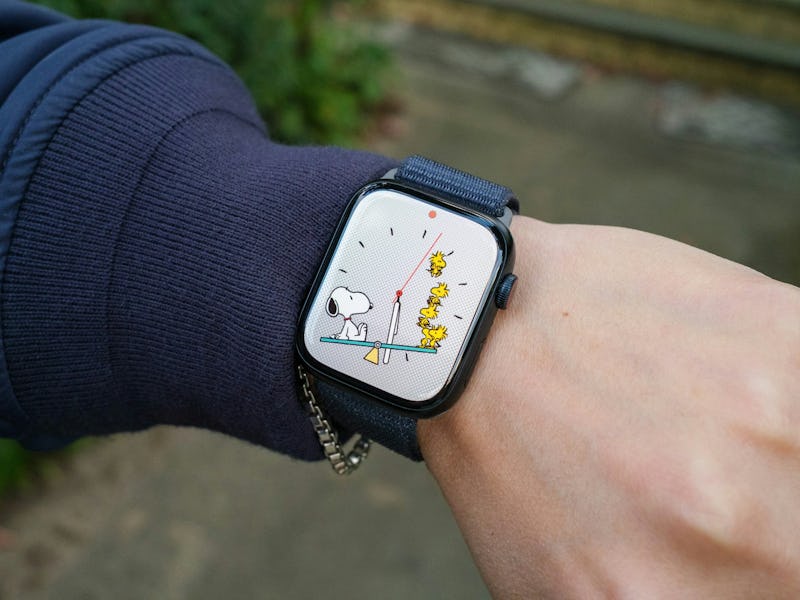11 Years Later, Smartwatch Design Has Hit a Dead End. Now What?
I really hope not.

This September, alongside the new iPhone 16 and 16 Pros (and maybe 16 Ultra?), Apple will presumably announce a 10-generation Apple Watch. Leaked 3D renders suggest the “Apple Watch X” will be even larger than the Apple Watch Ultra, with a bigger two-inch display. And while the case is said to be thinner, the Apple Watch X will look — unsurprisingly — like existing Apple Watches.
That sparked a discussion among the Inverse tech team: Is this it? Have smartwatch designs peaked? Are all new Apple Watches and Android-powered WearOS smartwatches just going to be variations of what we already have?
Unfortunately, the answer is probably yes.
From Creative to Apple Watch Clones
The Samsung Galaxy Gear came with a camera built into the band.
When Samsung released its Galaxy Gear in 2013, it blew open the world of smartwatches. (Technically, the Pebble was the first “modern” smartwatch but I count its E Ink display as more rudimentary, so it’s in a different class.) The Galaxy Gear was bulky and uncomfortable to wear, but it had a camera built into its band! The 1.9-megapixel camera didn’t take very good photos, but it was a camera — on your wrist! Finally, we had Dick Tracy or Inspector Gadget’s do-it-all wristwatch computers.
Samsung followed up the Galaxy Gear with the sleeker Gear 2 smartwatch. Then came the Gear S, which had a sci-fi-looking screen that curved around your wrist. Every tech company seemed to have a fresh take on smartwatches. We got round displays, rotatable bezels that could be used to navigate around the UI, and really fashion-first smartwatches from brands like Fossil and Montblanc. It was the Wild West and all of the experimentation made it feel like we were barreling toward a bold new future where smartwatches would replace the bricks in our pockets.
The Gear S felt like the last time a company tried to cram as much of a phone into a smartwatch.
But that didn’t happen. A series of unfortunate events led to the Apple Watch just swallowing up everything.
On the one hand, the Apple Watch found its footing starting with the Series 3. Apple quickly focused the smartwatch on fitness and health monitoring and then kept iterating the hardware on an annual cycle while adding new features that made it harder to live without once you got one.
On the other hand, while Apple and Samsung were busy carving up the West, Chinese phone makers like Huawei and Xiaomi rose to popularity and dominated the East. This dividing and conquering squeezed out longtime phone players such as HTC, Sony, and even LG, and as a result, the smartwatch competition they brought also disappeared when their phone businesses went bust.
Simultaneously, Google seemed to lose interest in its WearOS smartwatch platform. The smartwatch OS saw fewer and fewer keynote minutes during the company’s I/O developer conference. It also didn’t help that Qualcomm, the chipmaker for many of these Android-compatible smartwatches, fell behind the Apple Watch in performance and efficiency. From a pure product comparison, WearOS smartwatches were becoming less competitive. So, actually, everything from the software to the hardware contributed to the smartwatch’s slow and eventual decline.
The Apple Watch’s popularity really left room for little else; people just wanted an Apple Watch. Instead of new designs and differentiating features, smartwatch makers quietly gave up and shamelessly made Apple Watch clones. Here’s Samsung’s knockoff; here’s Xiaomi’s; here’s Huawei’s. Almost every smartwatch, save for a few like Samsung’s Galaxy Watches or Google’s Pixel Watches, has more or less adopted the Apple Watch’s form factor as The One True Smartwatch Design: a rectangular screen, digital crown, and a side button (or two).
In hindsight, it’s all really depressing how smartwatch innovation collapsed, but maybe it was always going to turn out this way. In the same way smartphones have largely accepted the iPhone-defined touchscreen glass-and-metal sandwich design, how many ways can you make a smartwatch?
The Smartwatch’s Final Form?
More health sensors, including the rumored blood glucose monitor for a future Apple Watch, are to be expected as smartwatches become even more important health guardians, but what else will smartwatches be able to do? AI? That seems inevitable, the same way wireless earbuds are now getting chatbot support. Might we see cameras return? I’d like that. Whether it’s a camera that’s embedded underneath the screen for video calling or selfies or a camera for computer vision (similar to the AI vision features you get with Meta Ray-Ban smart glasses, the Humane Ai Pin, or the Rabbit R1), the time does seem right for smartwatches to get a camera.
But those are features to add inside of smartwatches. What about actual hardware design?
Huawei’s Watch Buds smartwatch has a screen that opens up to reveal wireless earbuds
Samsung is still pushing out new round smartwatches, but I think there’s a real possibility that everyone just changes to a rectangular one. It’s just easier to stamp out rectangular screens than it is a circular one. It’s not like we’re going to get a triangle smartwatch display; that’s just not practical.
It’s also easier to design an interface — especially one that you scroll and swipe through — for rectangles. Despite almost a decade of round smartwatches, it’s still evident in devices like the Galaxy Watch 6 and Pixel Watch 2 where a rectangular UI is shoved into a round display; it looks sloppy in my opinion.
That’s not to say there can’t be any smartwatch innovation. Huawei’s clever Watch Buds have a screen that pops open to reveal hidden wireless earbuds. There’s even been an uptick in more specialized smartwatches — more rugged and longer-lasting ones — like Garmins. But what other directions can we take smartwatch design? I’d like to see some fun (but still practical) industrial design that breaks out of this Apple Watch status quo.